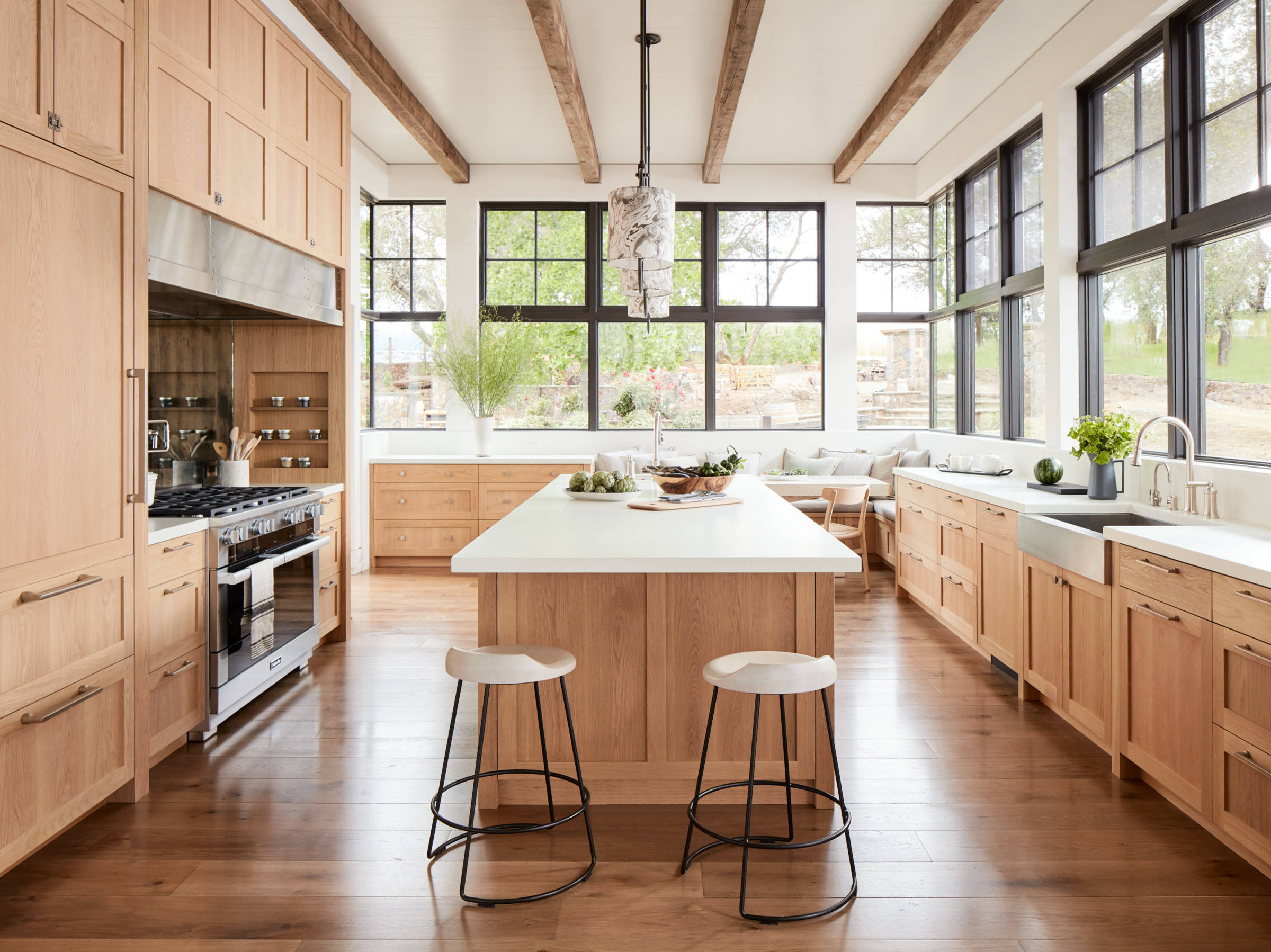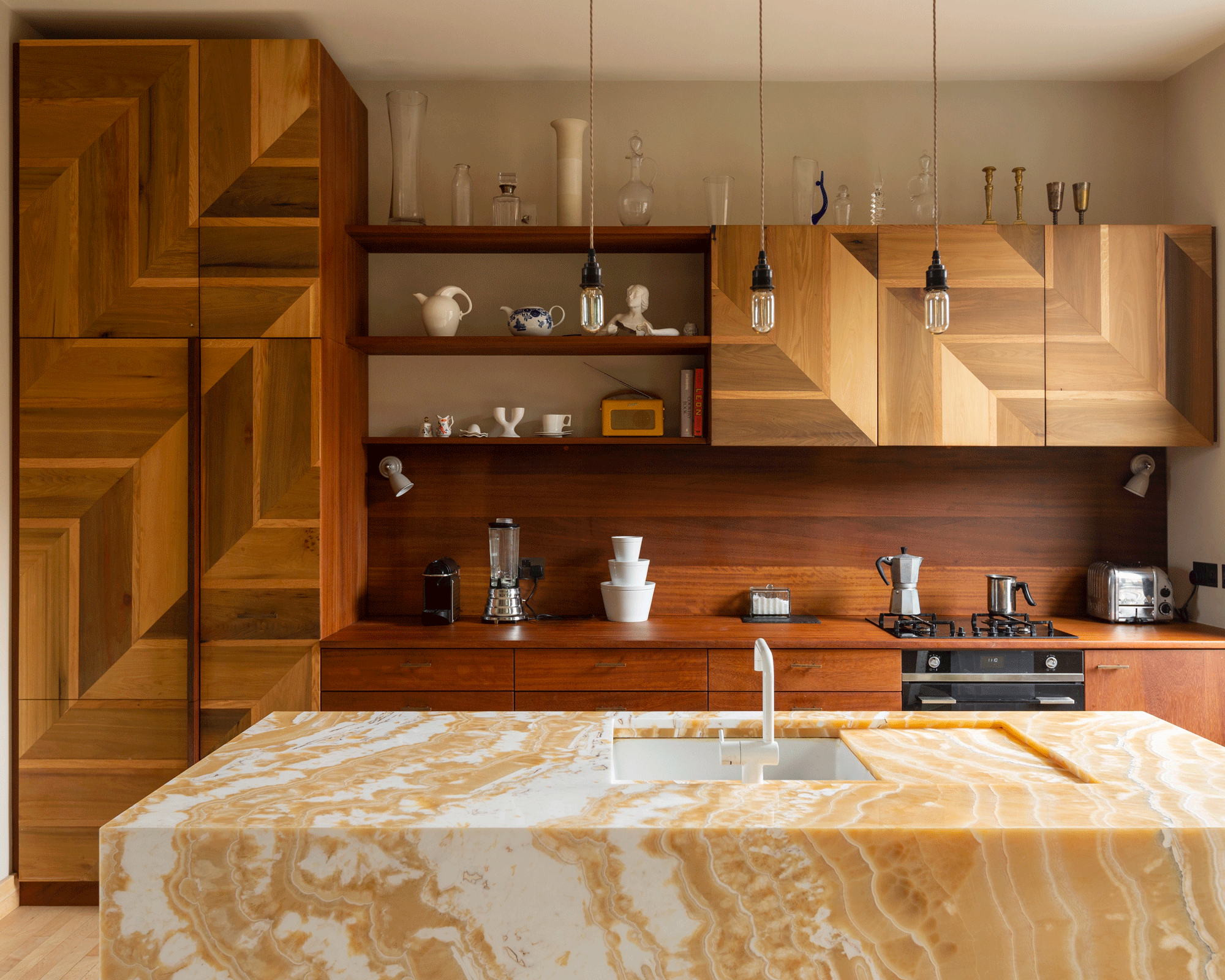Manufacturing Processes of Compressed Wood Cabinets

So, you want to know how those surprisingly sturdy (and sometimes surprisingly cheap!) compressed wood cabinets are made? Buckle up, buttercup, because it’s a wild ride of sawdust, glue, and high pressure! We’re diving deep into the fascinating world of wood compression, exploring the different methods, their pros and cons, and even the environmental impact. Prepare for a whirlwind tour of cabinet creation!
Compressed wood kitchen cabinets – Compressed wood cabinets aren’t made from magic (though sometimes they feel like it!). Instead, they rely on several clever manufacturing processes that transform wood particles into surprisingly strong and consistent panels. These processes differ in the type of wood used, the particle size, the compression methods, and the adhesives employed. Let’s break it down.
Manufacturing Methods and Their Properties
Several methods exist for creating compressed wood, each offering a unique blend of strength, durability, and cost. The choice depends on the desired quality and budget. Here’s a comparison:
| Method | Material Strength | Durability | Cost |
|---|---|---|---|
| Particleboard (PB) | Moderate; susceptible to moisture | Moderate; prone to chipping and swelling | Low |
| Medium-Density Fiberboard (MDF) | High; more uniform than PB | Good; less susceptible to chipping than PB but still vulnerable to moisture | Medium |
| High-Density Fiberboard (HDF) | Very High; excellent for load-bearing applications | Excellent; highly resistant to moisture and damage | High |
| Oriented Strand Board (OSB) | High; strong in shear but weaker in tension | Good; relatively moisture-resistant but less so than HDF | Medium |
Note that these are general comparisons. The actual strength, durability, and cost can vary depending on the specific manufacturing process and materials used. Think of it like this: all pizza is pizza, but a gourmet Neapolitan is a *very* different beast from a frozen supermarket pie.
The Role of Adhesives and Resins
Adhesives and resins are the unsung heroes of compressed wood manufacturing. They’re not just glue; they’re the magic that binds the wood particles together, influencing the final product’s strength, water resistance, and overall performance. Without them, you’d have a pile of sawdust, not a cabinet.
Different adhesives offer different properties. Some are better at resisting moisture, others provide superior strength. Formaldehyde-based resins were once common, but concerns about their emissions have led to a shift towards more eco-friendly alternatives, like urea-formaldehyde resins with lower formaldehyde content, or even completely formaldehyde-free options. The choice of adhesive significantly impacts the final product’s cost and environmental impact.
Environmental Impact of Compressed Wood Cabinets
Compared to solid wood cabinets, compressed wood cabinets generally have a lower environmental impact in some ways and a higher impact in others. The use of smaller wood pieces and wood byproducts reduces the demand for large, mature trees. However, the manufacturing process requires energy and produces emissions, and some adhesives contain volatile organic compounds (VOCs) that can be harmful to the environment and human health. The overall environmental footprint depends heavily on the specific manufacturing techniques, the type of wood used, and the disposal methods at the end of the cabinet’s lifespan.
For example, a cabinet made from recycled wood and using low-VOC adhesives would have a significantly smaller environmental footprint than one made from newly harvested wood and traditional, high-VOC resins. It’s a complex issue with no simple answer, much like the question of whether pineapple belongs on pizza.
Design and Aesthetics of Compressed Wood Cabinets: Compressed Wood Kitchen Cabinets

So, you’ve conquered the manufacturing process of compressed wood cabinets – congratulations! Now let’s talk about the fun part: making them look absolutely stunning. Forget boring old cabinets; we’re about to unleash a design revolution in your kitchen.
Compressed wood, my friends, is a chameleon. It can be whatever you want it to be, from sleek and modern to rustic and charming. The key is understanding how to manipulate its inherent qualities to achieve the desired aesthetic.
Modern Kitchen Design Concept
Imagine this: a kitchen bathed in soft, natural light. The cabinets are a sophisticated charcoal grey, a compressed wood masterpiece finished with a smooth, matte lacquer. The sleek lines are accentuated by minimalist, brushed nickel hardware – simple, elegant, and utterly modern. The countertops are a crisp white quartz, creating a striking contrast against the dark cabinets. A backsplash of shimmering, metallic tiles adds a touch of glamour. The overall effect is clean, sophisticated, and effortlessly cool. Think minimalist chic meets industrial edge. It’s the kind of kitchen that whispers “I’m stylish, but I’m also incredibly practical.”
Versatility of Compressed Wood in Different Design Styles
Compressed wood’s beauty lies in its adaptability. Want a minimalist haven? Opt for a clean, white finish, maybe with subtle grey veining to add a touch of depth. For a rustic charm, consider a natural wood stain that highlights the wood grain – think warm honey tones or a rich, dark walnut. A traditional style? A slightly distressed finish, paired with ornate brass hardware, will transport you back in time. The possibilities are as limitless as your imagination. Think of a distressed, almost white-washed finish mimicking aged wood for a farmhouse feel, contrasting beautifully with black matte hardware. Or a vibrant, high-gloss finish in a bold color like emerald green for a truly contemporary pop. The finish dictates the mood.
Comparison of Compressed Wood Cabinets to Other Cabinet Materials
Let’s get down to the nitty-gritty and compare our star material to the competition. Here’s the lowdown:
- Compressed Wood vs. Solid Wood: Solid wood offers undeniable charm, but it’s pricier and more prone to warping and damage. Compressed wood provides a cost-effective alternative with comparable aesthetic appeal, especially with the right finish.
- Compressed Wood vs. MDF: MDF (medium-density fiberboard) is budget-friendly, but it can be less durable and doesn’t offer the same textural richness as compressed wood. Compressed wood wins in both durability and aesthetic versatility.
- Compressed Wood vs. Particleboard: Particleboard is the budget king, but its susceptibility to moisture and its generally less appealing aesthetic make it a clear loser in this comparison. Compressed wood is a significant upgrade in both looks and longevity.
Practical Considerations and Comparisons

So, you’re ready to dive into the wonderful world of compressed wood kitchen cabinets? Fantastic! But before you start envisioning your perfectly organized spice rack, let’s tackle the nitty-gritty details of installation, maintenance, and a little friendly comparison to other cabinet materials. Think of this as your pre-cabinet-construction survival guide.
Cabinet Installation: A Step-by-Step Guide
Proper installation is key to avoiding cabinet-related meltdowns (and potential marital strife). Follow these steps carefully, and you’ll be well on your way to kitchen cabinet nirvana. Remember, safety first! Always wear safety glasses and appropriate work gloves.
- Preparation is Paramount: Before you even think about touching a screw, carefully measure your wall space and ensure your cabinets fit. Trust me, this step saves a world of heartache later. Double-check your measurements! Triple-check them, if you’re feeling particularly cautious.
- Wall Mounting Magic: Using a stud finder, locate the wall studs. This is crucial for secure mounting. If you don’t have a stud finder, consider borrowing one from a friend or renting one from your local hardware store. This is not a step to skip.
- Level Up Your Game: Use a level to ensure your cabinets are perfectly aligned. Nothing screams “amateur hour” quite like crooked cabinets. Remember, even a slight misalignment can become a major eyesore over time.
- Screw It In: Carefully attach the cabinets to the wall studs using appropriate screws. Make sure the screws are long enough to penetrate the wall studs securely. Don’t be shy with the screws, but don’t overtighten them either; you could crack the wood.
- The Finishing Touches: Once all cabinets are securely mounted, install the doors and drawers. Take your time and double-check everything. You’re almost there!
Maintenance and Care of Compressed Wood Cabinets, Compressed wood kitchen cabinets
These cabinets aren’t indestructible, but with a little TLC, they’ll last for years. Think of it as a mutually beneficial relationship – you keep them clean, they keep your kitchen looking spiffy.
Compressed wood cabinets are relatively low-maintenance. Regular dusting with a soft cloth is sufficient for everyday cleaning. For spills, wipe them up immediately with a damp cloth. Avoid harsh chemicals and abrasive cleaners, as these can damage the finish. Stubborn stains can usually be tackled with a mild dish soap solution. If you encounter any significant damage, consult a professional for repair options. Remember, prevention is always better than cure!
Compressed Wood Kitchen Cabinets: A Refreshingly Human Guide
Forget the robotic jargon. Let’s talk kitchen cabinets in plain English. Compressed wood cabinets offer a fantastic blend of affordability and durability. They’re a smart choice for budget-conscious homeowners who want stylish, functional cabinets without breaking the bank. They’re not as prone to warping as some other wood types, and they’re surprisingly resistant to scratches and dents. However, they might not have the same luxurious feel as solid hardwood cabinets. The key is to choose wisely and install them properly. Think of it like choosing a great pair of jeans – they need to fit your style and budget.
